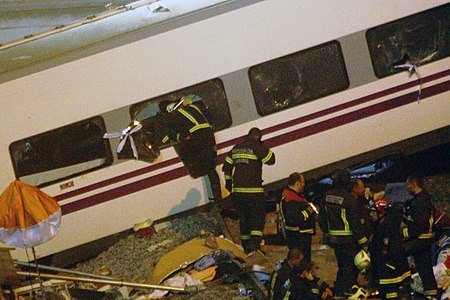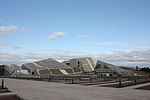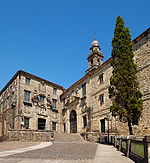Santiago de Compostela derailment

The Santiago de Compostela derailment occurred on 24 July 2013, when an Alvia high-speed train traveling from Madrid to Ferrol, in the north-west of Spain, derailed at high speed on a bend about 4 kilometres (2.5 mi) outside of the railway station at Santiago de Compostela. Of the 178 people injured, the provisional number of deaths in hospital had reached 79 by the following 28 July.The train's data recorder showed that it was traveling at over twice the posted speed limit of 80 kilometres per hour (50 mph) when it entered a curve on the track. The crash was recorded on a track-side camera that shows all thirteen train cars derailing and four overturning. On 28 July 2013, the train's driver, Francisco José Garzón Amo, was charged with 79 counts of homicide by professional recklessness and an undetermined number of counts of causing injury by professional recklessness.The crash was Spain's worst rail accident in over forty years, since a crash near El Cuervo, Seville, in 1972.[note 1]
Excerpt from the Wikipedia article Santiago de Compostela derailment (License: CC BY-SA 3.0, Authors, Images).Santiago de Compostela derailment
Rúa de Angrois, Santiago de Compostela
Geographical coordinates (GPS) Address Nearby Places Show on map
Geographical coordinates (GPS)
| Latitude | Longitude |
|---|---|
| N 42.8595 ° | E -8.5277777777778 ° |
Address
Rúa de Angrois
Rúa de Angrois
15702 Santiago de Compostela
Galicia, Spain
Open on Google Maps








